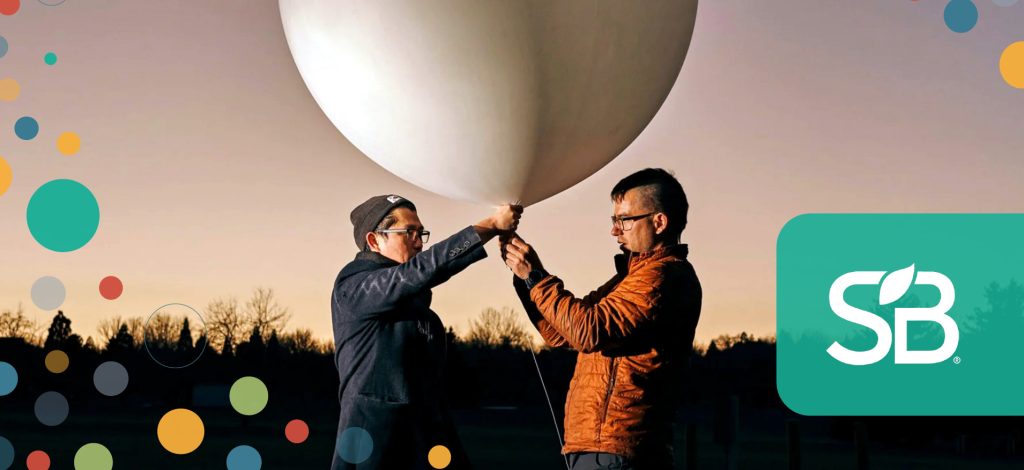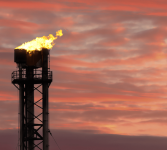A Rogue Startup Thinks It Has a Solution to Climate Change; The Scientific Community Disagrees
6 min read
Despite a lack of scientific consensus regarding the efficacy and safety of its approach, intrepid startup Make Sunsets is throwing caution to the wind (literally).
Stratospheric Aerosol Injection (SAI) might sound like something out of
science fiction, but it’s an idea that was introduced by Russian climatologist
Mikhail Ivanovich
Budyko
in 1974: Releasing tiny, reflective particles into the upper atmosphere would
theoretically bounce sunlight back into space — essentially creating a planetary
sun shade to cool the Earth. It was inspired by cooling effects caused by volcanic eruptions’
ejected particles, spurring the question — could this natural phenomenon be
mimicked to cool our planet?
Since then, SAI — along with several other unproven theories around
geoengineering our way clear of a climate
castrophe
— has remained a controversial idea, even as we recognize the need for
unconventional solutions to avert catastrophic climate change. Scientists have
been studying the effects of SAI for years, trying to navigate through a
complicated field of geopolitical debates and possible environmental
consequences.
Make Sunsets
Despite the lack of scientific consensus regarding its efficacy, intrepid
startup Make Sunsets has thrown caution to the
wind (literally). Co-founded by friends
Luke Iseman and Andrew
Song in 2022, Make Sunsets has been causing
a stir amongst scientists for its rather unscientific approach to SAI: The
company — based in Box Elder, South Dakota — has begun injecting sulfur
dioxide (SO2) into the atmosphere in latex balloons, in an effort to keep
planetary temperatures in a livable range long enough for other solutions to
develop.
“What we’re doing is not new; it’s been in academia since the 1970s. It’s well
studied — there are tons of research papers out there about this, and loads of
modeling has been done too, with people carrying out computer simulations [to
answer] ‘what happens if we do XYZ?’” Song, who bonded with serial
entrepreneur Iseman back in 2015 over their “shared
passion for hardware companies,” told Sustainable Brands® (SB). “But
there hasn’t been a company that has tried to deploy — so, that is our focus.”
Make Sunsets positions itself as finally taking the needed actions that
researchers are too ‘scared’ to do. But scientists are cautious for a reason —
meaning, there must be a reason why this radical solution has yet to be
deployed.
“I don’t personally know any scientists who think we should be out doing SRM
(solar radiation
modification)
right now or are even advocating for using SRM at any point. We need to know how
it would play out in the climate system,” Sarah
Doherty
— a PhD in Atmospheric Sciences from the University of Washington who has
been conducting research on particulate pollution in the atmosphere and how it
affects climate, told SB. “The biggest worries with SRM involve how it will
alter patterns in the climate system, and how that plays out for different
ecosystems. There’ll be less warming, yes; but you’ll also have changes in
precipitation — which could, for example, cause drought over the Amazon,
etc. So, you would want to know how to not do that.”
Despite the unknowns, Make Sunsets has forged ahead and launched 28 balloons.
Song explained that they source their SO2 from a commercial welding and gas
company that sells tanks of it, and measure the amount emitted by weighing the
balloon before and after they fill it with SO2 using a “sensitive scale.” Helium
is also added, which allows the balloons to float. As they get higher, they
expand — eventually bursting and releasing SO2 into the atmosphere. The altitude
is confirmed using GPS and a camera; however, readings have been inconsistent.
Make Sunsets’ approach is based on the work of geoengineering expert David
Keith, a Harvard
University professor and lead researcher for the SCoPEx
project — a scientific experiment to
advance understanding of stratospheric aerosols that could be relevant to solar
geoengineering. The project builds on four decades of SCoPEx research on the
environmental chemistry of the ozone layer.
[Keith’s hypothesis](https://www.washingtonpost.com/climate-environment/2023/01/09/make-sunsets-solar-geoengineering-climate/)
is that “one gram of SO2 offsets the warming effect of one ton of CO2.” This math is the
driving force behind Make Sunsets’ balloon deployment, and also the rationale
behind the cooling
credits
which the company now offers — $10 to offset 1 tonne.
“The balloons that we currently use have a capacity of about one kilogram. The
weight of $1 is one gram, so the weight offsets the warming effect of one tonne
of CO2 for a year,” Song exclaims. “It’s a very simple concept — the hard part
is convincing enough people that we should do this.”
While Make Sunsets is moving ahead, many scientists and international bodies
seem to agree that solar engineering should be tested and discussed on an
international level before being carried out in the field: Mexico recently
banned solar
geoengineering
experiments in the country after the startup carried out two experiments in the
northern state of Baja California. Iseman and Song are now deploying their
balloons in the US, after apparently receiving an OK from the FAA.
However, this is one of many
claims
by the company that remain unconfirmed.
With a lack of scientific data to support the efficacy and safety of SAI, the
scientific community is vocally frustrated with the two entrepreneurs who see it
as a magic bullet for slowing climate change. On the flip side, Song says the
Make Sunsets team doubts the motives behind the pushback.
“When it comes to scientists, you have to think about where the money is coming
from,” he asserted. “The reason why they say we shouldn’t do this is because, at
the end of the day, their jobs are on the line. If we start deployment, then
they can’t do research anymore using computer simulations and modeling — we’re
kind of taking the wind out of their sails if we keep continuing to do this.”
What the scientists say
However, Doherty insists the scientific community merely wants to ensure that
every climate risk is considered, the outcome of every approach is known, and
that there is an international consensus before any methods of SRM are
implemented.
“We need to know how SRM would play out in the climate system; and then other
people — decision-makers and society — can decide whether or not to use it,” she
says. “Make Sunsets is not doing science — they’re not taking measurements; they
don’t know what altitude the balloons are bursting at; they don’t know how much
particulate ends up in the stratosphere, if any — or whether if it’s even
reflecting sunlight. They’re just throwing stuff up there with no appreciable
effect.”
Jim Haywood, PhD — a
Professor of Atmospheric Physics at the University of Exeter, has been
researching climate intervention for over a decade. During that time he led the
UK’s Geoengineering Model Intercomparison Project (GeoMIP)
which used state-of-the-art climate models to determine what the impacts of
climate are in future scenarios, including combatting some of the worst effects
of global warming.
Haywood told SB: “What Make Sunsets is doing is not credible and has no backing of
the scientific community. Scientists research and take a very cautionary
attitude. Making sunsets is entirely the opposite; they’re not scientists —
they’re provocateurs.”
He explained the scale at which SO2 needs to be deployed to make a
difference. The 1991 eruption of Mount
Pinatubo in the Philippines
emitted nearly 20 million tons of sulfur
dioxide
into the stratosphere, which caused global temperatures to drop temporarily
(1991 through 1993) by about 1°F (0.5°C). Make Sunsets emit 100-500 grams of SO2
per balloon. Therefore, they would have to deploy billions of balloons to make a
difference.
Meanwhile, Make Sunsets continues to attractors investors — including Pioneer
Fund, Draper
Associates and Boost VC.
However, both Doherty and Haywood agree that reducing atmospheric greenhouse gas
emissions (GHGs) should be the priority before anyone considers SAI.
“None of the SRM approaches are the answer to climate change. They won’t fix the
problem,” Doherty stated. “The only way to fix the problem is to reduce
greenhouse gas emissions and get concentrations back to safer levels in the
atmosphere.”
“The first port of call must be greenhouse gas emission
reduction
— anyone working in solar radiation modification will say the same,” Haywood
asserted. “You won’t find many people suggesting that it’s time for us to start
deploying sulfur dioxide into the stratosphere, because it’s just not.”
While SAI may hold potential for mitigating climate change, it also carries many
as-yet-unruled-out risks and uncertainties; and proceeding with unproven
geoengineering solutions could lead to unforeseen environmental, ecological and
geopolitical consequences beyond what we already face.





